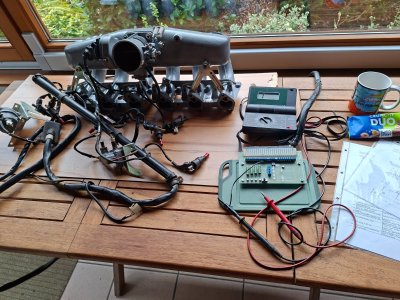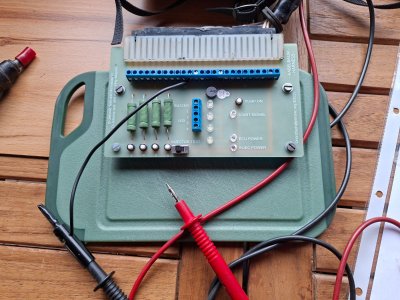Just obtained a nice tool with the same test functions as the EFAW 228.
I just tested some functions "offline" first, "online" testing on the car to follow.


It was designed and distributed as a kit by Norbert Fischer of Jetronic.org quite a long time ago.
D-Jetronic article series by Dr-DJet

jetronic.org
Our friend Mark of the German forum now arranged for some ready to go boards.
The functions according Dr-DJet:
quote
Functions of the test and measurement adapter:
Together with a multimeter, the adapter covers the entire test spectrum of the EFAW-228.
Voltage and resistance measurements with an external multimeter are facilitated by the 25-pin screw-terminal-block, the pins can be reliably identified.
Integrated test options:
- 3 permanently connected control LEDs power supply control unit (red), power supply injectors (red), start signal (yellow)
- 1 button for activating the fuel pump
- 4 buttons for activating the injectors (can be switched off).
- 4 variably usable test LEDs (white) for checking the accel. switches, trigger contacts, idle-switch, full-load contact, absolute pressure switch
- 1 variably usable buzzer, e.g. for setting the idle-switch
On the picture you can see the colored LEDs... an original wiring harness provides the supply voltage here.
Simulated, I energized the start signal (starter) as well as two of the white LEDs, which are connected to the respective pins by wire for the individual tests.
unquote
A must've for every owner of a D-JETRONIC controlled car.
Thomas





